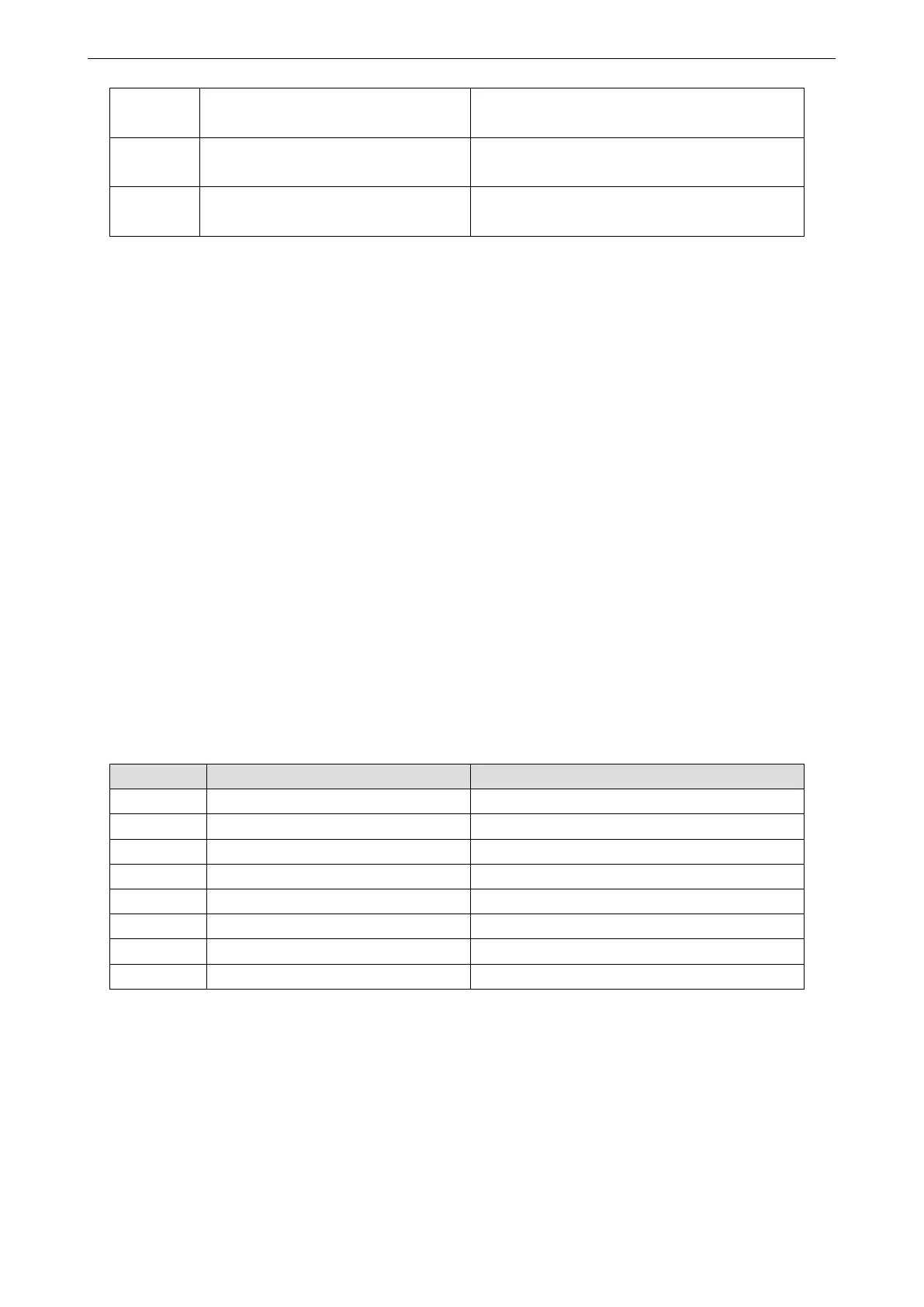168
AI3 display voltage 1 (only AI3
support negative voltage)
AI3 measured voltage 2 (only AI3
support negative voltage)
AI3 display voltage 2 (only AI3
support negative voltage)
This group of function codes is used to correct the analog input AI to eliminate the influence of bias and gain of
the analog input.
This group of function parameters have been corrected before leaving the factory, and when the factory value is
restored, it will return to the factory corrected value. Generally, there is no need for correction in the application
site.
The measured voltage refers to the actual voltage measured by the multimeter and other measuring instruments,
and the displayed voltage refers to the voltage display value sampled by the frequency converter. See the
voltage (U0-26, U0-27, U0-28) before AI correction of U0 group.
When correcting, input two voltage values at each AI input port, and input the values measured by the
multimeter and the values read by U0 group into the above function code, then the inverter will automatically
correct the AI bias and gain.
For the case that the user given voltage and the actual sampling voltage of the converter do not match, the field
correction method can be adopted to make the sampling value of the converter consistent with the expected
value. Taking AI1 as an example, the field correction method is as follows:
Given AI1 voltage signal (about 2V)
The actual measurement of AI1 voltage value is saved in AD-00, U0-26 is saved in AD-01.
Given AI1 voltage signal (about 8V)
The actual measurement of AI1 voltage value is saved in AD-02, U0-26 is saved in AD-03.
When correcting AI2 and AI3, the actual sampling voltage viewing positions are U0-27 and U0-28 respectively.
For AI1 and AI2, 2V and 8V are recommended as the correction points, and for AI3, -8V and 8V points are
recommended as the correction points.
This group of function codes is used to correct the AO of analog output to eliminate the influence of bias and
gain of analog output.
This group of function parameters have been corrected before leaving the factory, and when the factory value is
restored, it will return to the factory corrected value. Generally, there is no need for correction in the application
site.

